IndiaWilds Newsletter Vol. 13 Issue I
ISSN 2394 – 6946
Wildlife Conservation & Discovering India
History attaches lot of importance to travellers to ancient India. The accounts of Megasthenes, Faxian, Xuanxang, Al Biruni, Ibn Battuta help us in understanding the India of that era. Many scholars used to come to ancient India to learn from the various seats of learning like Uddiyana (Odisha), Gandhara, Takshashila, Kamarupa (Assam), Bodha gaya, Banaras etc. Scholars from various parts of India used to also travel to distant seats of learning. These travels used to help the various travellers in understanding and assimilating the local culture and traditions.
In ancient India apart from trade and commerce, a lot of these travels were for learning, some purely for spirituality and some for spiritual learning. The imprints of these travels have remained in public memory. During our childhood days we were told that you become wise when you travel. People who had returned from abroad were called to speak in functions.
In these days of internet where information is readily available, people still yearn for physical travel as despite the structured way of learning about a place, the element of serendipity is missing. People often realise that those small events or details which can be of interest to them will never be captured in standard web presentations. And when real people meet real men and women during their travels they learn from each other’s experiences and expertise. Values and beliefs too leave a strong impression in the minds.
When an economy starts doing well, people get some disposable income in their pockets and they start traveling. However, most of the times they get swayed by glitzy advertisements of foreign destinations and hence enrol with a tour operator to travel abroad. The outbound tour market in India was exploding till the Covid 19 pandemic brought it to a standstill. Outbound tours result in lot of outflow of foreign exchange from India. The foreign countries benefit. Many years ago the Chinese Government realised this and focused on improving the percentage of people travel within their own country. When people travel within their own country, the domestic economy improves. So the Chinese Government even created a National Day celebrations where people get around a week off. With encouragement from Government, people took to travel in massive numbers to the various tourist places.
In India, the campaign by the tourism ministry is focused on getting external tourists to India. There is not much focus on the domestic traveller. However, immense benefits can accrue if the Government encourages more domestic travellers to explore the beauty in the immense diversity that India offers. A major beneficiary of this move, if well thought-out, will be India’s environment and forests as well as the local people and economy.
Tourism Potential:
India offers breath-taking scenic locations to unwind after hectic and stressful life in the urban areas. Beautiful snow-covered mountains as well as sand dunes, deserts as well as lush green rainforests, seashores, lakes, rivers, waterfalls, caves, India has all kinds of scenic locations to soothe your soul. Iconic wildlife species like tigers, lions, leopards, elephants, rhinos, Gaurs etc can mesmerise the tourists. There are 101 National Parks and 553 Wildlife Sanctuaries in India and each one of them has something unique to offer. It needs a lifetime to experience each of these National Parks and wildlife sanctuaries.

A tigress (Panthera tigris tigris) code named T17, though born free is now carrying a Radio collar around its neck. To make matters worse, it is often followed by noisy tourists and photographers in Ranthambhore Tiger Reserve. Wildlife tourism is taking its toll in India and several times I observed this tigress being disturbed by tourists during its hunt. Canon EOS 1D Mark IV, Canon EF 24-105 F4L IS USM at 32mm, ISO 200, F4.5, 1/640, full frame image.
Tourism pressure:
At the moment people visit mostly the premier National Parks as they had either seen or heard about it online as well as some photographs, so they want to explore these places. However, this also leads to huge tourism pressure on a few wildlife areas. The forest department is happy to receive lot of revenue from some of these premier national parks. However, concentration of all tourists to a handful of wildlife sanctuaries comes at great risk as wilderness areas are ecologically fragile.
The forest staff at these places also spend disproportionate amount of time catering to tourists and important work like foot patrol and scientific management of the wildlife park is ignored. In some of these places deaths of large wild animals like tigers and elephants have remain unnoticed for days. Considering this, it is important that the tourism is uniformly promoted in various National Parks, wildlife sanctuaries, conservation reserves and community reserves. This will ensure less crowd in wildlife sanctuaries and other protected areas and hence tourists would experience more peace and quiet. Recharging the batteries of our soul can only be through peace and solitude.
Experiential Travel:
Ensuring tourists to smaller and less crowded places like conservation reserves, community reserves and smaller wildlife sanctuaries will also help in more interaction with the local communities. This is especially true when the tourism is managed by the local communities. Too often tourism model is based on big resorts where people are treated well. However, people often complain that it is like big hotels where tourists are given all the creature comforts and people go on safari and then come back and stay in their own world. So tourists also cannot have actual experience of the place like understanding the culture and lifestyle of the local communities. In places where the resorts are run by the local communities, tourists have often interacted with them for eg. watching them cook local dishes, watch the local artisans etc or even accompanying people to see them fish, collect palm juice etc. At the moment, a few tour operators bring in a few locals to do some folk dance or play and it sounds too plasticky and soulless. India needs to move beyond the cliched manner in which tours are run.
In India, the local cuisine changes every 100 kms. Our food habits have evolved based on availability, climate as well as religious beliefs. Often we city bred people are amazed by the profound words cloaked in the earthy manner of the locals and hence remember those as lessons. Observing and experiencing local cultures makes one understand the locals better and also helps in national integration.
When we travel in a responsible manner and ensure that our travel funds go to locals instead of middlemen, then the prosperity of the local community is ensured. When there is more income, there is less reason for the local people to migrate to the big cities and endure the filth, squalor and pain there. At a time when big cities are becoming bigger and bigger and hence ecologically unsustainable, any action which helps in ensuring local livelihoods is one step towards a better environment and better earth.
One challenge of the current tourism safari model is the dependence on big canter and too many jeep safaris into the forests which cause much stress to the wildlife. Too often the tourism pressure is causing change in wildlife behaviour.
If the forest department and the tour operators can work together than tourists can be taken on wildlife patrolling treks. Guides can explain the various flora and fauna and the use of various plants. Such treks with overnight camps in the forest can help patrol the place and also provide some authentic and memorable experience to people. Many corporates would love these for team building activities. There are also lot of people who will get real satisfaction in helping out in foot patrol. If done well, the forest department and local communities can get sustained revenue as these activities can become more popular.
If the forest department can call for story competition among all such participants in the entire state/country, more people can be motivated to write travelogues on their experience, and this can further spread the word. This will also help in taking the focus away from clicking tigers and help understand the flora and fauna better.
The reason why our environment and forests are easily devastated is because people in power don’t understand the impact of their actions. If people can participate in real experiential and conscious travel then the issues faced by forests as well as local communities can be easily understood and alternate solutions found.
Similarly, with the increased health consciousness people can start understanding the agricultural practices in the various communities, while visiting nearby wildlife areas. This will also help them understand the challenges of the farming community. Many people are tech savvy and if they are able to understand the issues of the farming community, including challenges of synthetic pesticides and synthetic fertilisers poisoning the land, crop loss due to wild herbivores, draught and rain and other such issues then some tourists can perhaps come out with better technological solutions. It has the potential to be win-win for all.
Exploring Herbs:
India prides itself for being the land of Ayurveda. The unprecedented Covid pandemic has made people focus on health juices and other alternate therapies. Tourism to rural areas and forests along with trained guides who can identify various plants and explain their health benefits would be very enriching for people. At the moment there are many ayurvedic practitioners in rural areas who are trying hard to make their living. Tapping their knowledge and making them lead medicinal herb collection tours has the potential to catch the imagination of people. India offers many such potential opportunities for experiential travel. Unfortunately, it is limited due to the lack of knowledge among the tourism professionals.
When money starts flowing to the local economy, the locals will start focusing more on saving the forests. Conservation of wilderness and wildlife has to be seen as intricately linked with the day to day wellbeing of people. Only then India will be able to save its forests and wildlife. In the era of Climate Change, it is imperative that we think in a holistic manner and find out all the different ways and means to save India’s forests. Experiential travel can act as an important facet of discovering the uniqueness and soul of India and it will also help in saving India’s amazing forests and wildlife.
Pride of Haryana: Sultanpur Bird Sanctuary
By Shakti Bishnoi and AS Bishnoi
Conservation News:
1.59 crore rupees Environment Compensation fine on Construction and demolition entities
With a view to abate dust and related air pollution from the construction and demolition activities, the Commission for Air Quality Management for Delhi NCR and adjoining areas had directed the Central Pollution Control Board, the State Pollution Control Boards of Haryana, Rajasthan, Uttar Pradesh and the Delhi Pollution Control Committee to constitute special teams and launch inspection drives in the premises, processes and transportation of materials related to Construction &Demolition(C&D) activities in the NCR.
Intensive drives were conducted by these agencies from 24.12.2020 to 31.12.2020 by constituting about 227 teams. These teams carried out surprise checks and inspections at more than 3000 C&D sites of which about 386 sites were found to be non-compliant with the various Construction &Demolition(C&D) Waste Management Rules / Guidelines and dust mitigation measures stipulated by the Ministry of Environment, Forest and Climate Change and the Central Pollution Control Board. Further, an amount of approx. Rs.1.59 crore was levied as environment compensation against the defaulting agencies besides orders for stoppage of work at 12 locations.
Compliance with respect to transportation of materials related to Construction &Demolition(C&D) activities was also seen by the inspecting teams. About 325 vehicles, not in conformance with guidelines related to transportation of C&D materials, were levied environment compensation charges of approximately Rs. 1.17 crore.
Such fortnightly drives are planned to be continued to enforce compliance of the C&D waste management rules and related guidelines to abate dust pollution from C&D sector, which contributes significantly to poor air quality in the region.
To discuss in the forums click here: https://www.indiawilds.com/forums/showthread.php?19820-1-59-cr-rupees-Environment-Compensation-fine-on-Construction-and-Demolition-entities
76 Lakh rupees Air Pollution levies charged on non-compliant entities
With a view to abate dust and related air pollution from the construction and demolition activities, the Commission for Air Quality Management(CAQM) for Delhi-NCR and adjacent areas, directed the Central Pollution Control Board, the State Pollution Control Boards of Haryana, Rajasthan, Uttar Pradesh and the Delhi Pollution Control Committee to constitute special teams and launch inspection drives in the project premises and transportation of materials related to Construction &Demolition activities in the NCR.Inspections were conducted by these agencies from 31.12.2020 to 15.01.2021 by constituting about 174 teams at more than 1600 C&D sites of which about 119 sites were found to be non-compliant with the various C&D Waste Management Rules / Guidelines and dust mitigation measures stipulated by the Ministry of Environment, Forest and Climate Change and the Central Pollution Control Board. An amount of approx. Rs.51 lakhs was levied as environment compensation charges against the defaulting agencies, besides orders for stoppage of work at 27 locations.
Compliance with respect to transportation of materials related to C&D activities was also checked by the inspecting teams. About 563 vehicles, not in conformance with guidelines related to transportation of C&D materials, were levied environment compensation charges of approximately Rs. 25 lakhs.
The CAQM has asked state pollution boards that such fortnightly drives be continued to enforce compliance of the C&D waste management rules and related guidelines to abate dust pollution from C&D sector, which contributes significantly to poor air quality in the region.
Joint study group and surveillance squad to check ammonical nitrogen in Yamuna
The Central Pollution Control Board (CPCB) convened a meeting on January 04, with the officials of Delhi Pollution Control Committee(DPCC), Haryana State Pollution Control Board (HSPCB), Delhi Jal Board (DJB), Irrigation & Water Resources Department, Haryana and Irrigation and Flood Control Department, Delhi, to discuss the recurring issue of increase in Ammonical Nitrogen in River Yamuna and short and long term remedial actions required.
The long deliberations on the issue identified and agreed that possible reasons could be discharge of untreated sewage from upstream towns in Haryana, discharge from industrial units, Common Effluent Treatment Plants (CETPs) and Sewage Treatment Plants (STPs), illegal discharge of sewage from unsewered colonies in outer Delhi through tankers, lean flow in the River Yamuna and anaerobic decomposition of accumulated sludge on river bed.
A study group comprising Delhi Jal Board (DJB), Haryana State Pollution Control Board, Delhi Pollution Control Committee, Irrigation and Water Resources Department, Haryana, Irrigation and Flood Control Department, Delhi has been constituted. The group will review uniform monitoring protocol and requirement of strengthening monitoring mechanism, analyse past data and carry out field survey to identify critical hotspots as well as period of high ammonia levels. It has also been asked to suggest short and long term measures for sustained solutions, and submit its report within a month. It was also agreed to constitute a Joint Surveillance Squad comprising DJB, DPCC, Irrigation and Flood Control Department, Delhi, HSPCB and Irrigation and Water Resources Department,Haryana.
It is a well known fact that there is illegal discharge of industrial affluents and untreated sewage into the Yamuna river as well as all rivers in the country. Even the Hon’ble Supreme Court had in the past pointed out that pollution control board officials are corrupt. There should have been regular surveillance to identify discharge of sewage to keep our rivers and other waterbodies clean. Nevertheless, even if regular surveillance is done now still the water quality will improve. However, given the past track records it is very difficult to be optimistic.
To discuss in the IndiaWilds forums click here: https://www.indiawilds.com/forums/showthread.php?19823-Joint-study-group-and-surveillance-squad-to-check-ammoniacal-nitrogen-in-Yamuna
Air Quality Commission directs strict enforcement of dust control measures to curb Air Pollution
Dust emanating from the construction and demolition activities continues to be a major source of air pollution throughout the year. Such activities generate significant amount of dust, adversely impacting the Air quality by raising PM2.5 and PM10 levels.
The Commission of Air Quality Management in Delhi-NCR and adjoining areas reviewed the deteriorating air quality situation and has directed strict enforcement of dust control measures to curb air pollution in Delhi-NCR. The Air Quality Commission said that strict action must be taken against violators of construction demolition waste rules and the guidelines. Commission’s direction came after it reviewed dust control measures for National Capital Region including NCT of Delhi. The body also issued statutory directions to Central Pollution Control Board and Pollution Control Boards and Delhi Pollution Control Committee to constitute teams for inspection and strict enforcement of dust control measures. The Commission also issued directions to levy environment compensation charge from violators and stoppage of work, prohibition of construction and demolition activities based on extent of violations.
In order to ensure strict compliance of Construction and Demolition Waste Management Rules notified by the Ministry of Environment, Forest and Climate Change and guidelines on dust mitigation measures for handling Construction and Demolition Wastes, the Commission has directed the Central Pollution Control Board (CPCB), State Pollution Control Boards (SPCBs) of Haryana, Rajasthan, UP and Delhi Pollution Control Committee (DPCC) will constitute surprise inspection teams and to furnish fortnightly inspection reports to the Commission regarding compliance of rules with respect to construction and demolition activities in the National Capital Region. We hope that the implementation of the directives of the Air Quality Commission is full proof. Generally due to inefficiency as well as vested interests, the construction lobby continue to illegally carry out demolitions and constructions so the air quality in Delhi and in the National Capital Region remains even worse than Beijing.
Air Quality Commission ropes in top technical institutions to set up a Decision Support System
The Commission for Air Quality Management (CAQM) in NCR and adjoining areashas begun the process of setting up a Decision Support System (DSS) having a web, GIS and multi-model based operational and planning decision support tool.
This tool will help immensely in capturing the static and dynamic features of the emissions from various sources. It will have an integrated framework to handle both primary and secondary pollutants using chemical transport model. The system will also be able to handle the source specific interventions with the framework to estimate benefits of interventions and will focus on presenting the best results in a comprehensive user friendly and simple format for different users.
The Commission has entrusted the task to expert groups from reputed knowledge institutions of the country given belowfor framework development of Air Quality Management DSS for Delhi:-
Role of Different Organisations:
| Sr. No | Organization | DST Component | Role in DST |
| 1 | IMD, Delhi and IITM Pune | Chemistry component | Forecasting in delhi NCR using regional scale WRF-Chem & SILAM models |
| 2 | TERI | Physical component (Emission inventory and Observations) | Development/Upgradation of fine resolution Emission inventory in Delhi NCR |
| 3 | IIT Delhi and NEERI | Engineering component | Forecasting using Urban air quality models Formulation of control actions at short term and long term basis. Identification of hotspots and their management with city This group will work as bridge between other groups. |
| 4 | C-DAC Pune | Interactive user interface and dissemination component | Integration of Physical, Chemistry and Engineering Components at a common platform and dissemination of group output in simple form |
The Air Quality Management Decision Support Tool (DST) integrates an emissions inventory development application and database; regional, local and source–receptor modelling; and Geographical Information System (GIS) based visualization tools in a software framework so as to build a robust system to formulate and implement source specific interventions to improve the air quality over targeted sectors of Delhi / NCR.Identification ofsource specific interventions by the DST is deliberated with the involvement of stake holders.
The sources covered will include industries, transport, power plants, residential, DG sets, road dust, agricultural burning, refuse burning, construction dust, ammonia, volatile organic compounds, landfill etc. For instance, municipalities, industrial associations, industrial development authorities etc. would be the stake holders for identifying interventions related to waste burning, industrial source pollution, respectively.
Upon identification of feasible interventions, the artificial intelligence based expert system which has a hierarchical data base of simulated scenarios, potentially assessing the impact of the identified feasible intervention which would be implemented by the regulatory organization such as CPCB and state PCBs. The on-field implementation is monitored by credible citizen watch groups and professional NGOs independently. Finally, air quality data collected in the vicinity of the area where intervention is implemented will be analysed to understand the real-world benefits of such intervention.
To discuss in the forums click here: https://www.indiawilds.com/forums/showthread.php?19837-Air-Quality-Commission-ropes-in-top-tech-institutions-for-Decision-Support-system
Govt. approves advisory for management of Human-Wildlife conflict in India
The Standing Committee of National Board of Wildlife(SC-NBWL) in its 60th meeting held on 05th January has approved the advisory for management of Human-Wildlife Conflict(HWC) in the country. The advisory makes important prescriptions for the States/ Union Territories for dealing with Human-Wildlife conflict situations and seeks expedited inter-departmental coordinated and effective actions.
The advisory envisages empowering gram panchayats in dealing with the problematic wild animals as per the section 11 (1) (b) of Wild Life (Protection) Act, 1972.Utilising add-on coverage under the Pradhan MantriFasalBimaYojna for crop compensation against crop damage due to HWC and augmenting fodder and water sources within the forest areas are some key steps envisaged to reduce HWC. Payment of a portion of ex-gratia as interim relief within 24 hours of the incident to the victim/family.
The advisory also envisages prescribing inter-departmental committees at local/state level, adoption of early warning systems, creation of barriers, dedicated circle wise Control Rooms with toll free hotline numbers which could be operated on 24X7 basis, Identification of hotspots and formulation and implementation of special plans for improved stall-fed farm animal etc.
Some of the other important approvals took place during the meeting are, inclusion of Caracal, a medium size wild cat found in some parts of Rajasthan and Gujarat, into the list of critically endangered species for taking up conservation efforts with financial support under Centrally sponsored Scheme-Development of Wildlife Habitat. Now, there are 22 wildlife species under recovery programme for critically endangered species.
During the meeting, the Standing Committee also recommended the construction of causeway across Jampannavagu to Muthapur of Govindaraopet and between Jampannavagu to Motlagudem in Mulugu District of Telengana with certain mitigation measures. It also recommended the proposal for Tinaighat-Castlerock-Caranzol Railway doubling of South Western Railways, Karnataka with certain mitigation measures as advised by the Wildlife Institute of India, Dehradun.
The other decisions taken at the meeting are construction of a bridge and canal with an aim to augment the water supply and irrigation facilities in villages Madharwa, Thakurapur, Jamdhara and Sugaon in Balrampur District of Uttar Pradesh under the National SaryuNaharPariyojna with certain mitigation measures and the construction of Integrated Bus Terminus cum Commercial complex in Vashi, Navi Mumbai in Thane district with certain mitigation measures. The redeveloped facility will pave way for 17 bus bays and approximately 3,300 bus trips shall be operational, which will greatly benefit in transportation of people in and around Mumbai.
The National Board for Wildlife (NBWL) is constituted by the Central Government under Section 5 A of the Wildlife (Protection) Act, 1972 (WLPA). The Standing Committee of NBWL considers proposals after a series of levels of scrutiny and have recommendations of the State Chief Wildlife Warden, State Government and the State Board for Wildlife. During the meetings of SC-NBWL, the views of the expert members are taken into consideration before arriving at decisions.
To discuss in forums click here: https://www.indiawilds.com/forums/showthread.php?19825-Govt-approves-advisory-for-management-of-Human-Wildlife-Conflict-in-India
Equipment Discussions:
Sony announces Alpha 1 flagship mirrorless camera
Sony unveils Airpeak drone
Natural History
COUNTRY NOTEBOOK: M. Krishnan: ‘Large Grey Babbler‘ shared By Saktipada Panigrahi
https://www.indiawilds.com/forums/showthread.php?8852-Country-notebook-m-krishnan&p=47951#post47951
Photography Tips – Learning Exposure
To make photography learning easier, we are creating a photography tutorial video series. The first part of photography tips is on learning exposure. Check it out in this link: https://youtu.be/PT3vvNIJx1g
Wildlife Photography
Barking Deer by Shyamala Kumar
Leopard by Mrudul Godbole
https://www.indiawilds.com/forums/showthread.php?19789-Leopard-habitat
Baby Langur by Sabyasachi Patra
https://www.indiawilds.com/forums/showthread.php?19780-Awaken-your-inner-Child
Tigress by Jerin Dinesh
https://www.indiawilds.com/forums/showthread.php?19793-Tigress-in-morning-golden-light
Elephants by V S Sankar
https://www.indiawilds.com/forums/showthread.php?19809-The-Incredible-Show!
Purple Heron with Fish Net by Sabyasachi Patra
https://www.indiawilds.com/forums/showthread.php?19787-Purple-Heron-with-fish-net
Common Hoopoe by Abhirup Dutta Gupta
https://www.indiawilds.com/forums/showthread.php?19806-Common-hoopoe
Black-winged-stilt by Mangru Minz
https://www.indiawilds.com/forums/showthread.php?19790-Black-winged-stilt
Yellow peach Moth by Prajwal Ullal
https://www.indiawilds.com/forums/showthread.php?19800-Peachy-location-for-rest
Blue Mountains by Sabyasachi Patra
https://www.indiawilds.com/forums/showthread.php?19779-Blue-mountains
This is the 145th issue of IndiaWilds. With this issue we step on the 13th year of publication. An image of a wild tiger walking on a road passing through a National Park in Kabini adorns the cover page of this issue.
Watching the majestic grace of a tiger in prowl can easily fill the hearts of the most weary traveller with joy. Well thought out and holistic efforts to bring conscious travellers to remote corners of India can be a win-win situation as it would lead to the much needed boost to the local economy as well as result in conservation of our wilderness places.
Fragmentation of wildlife sanctuaries and other protected areas due to roads passing through them is a major challenge for the survival of various wildlife species. Many wild animals die when they are hit by speeding vehicles passing through the forest. Various scientific studies have established that wild animals remain on on side of their road due to the difficulties in crossing the road. That leads to reduced genetic diversity among species. Unfortunately, our authorities turn a blind eye to the problems caused by roads laid through forests. Alternate alignments of roads passing around wildlife sanctuaries can easily solve the problem. Mitigation measures like creating underpasses and overpasses are considered to be costly by NHAI (National Highway Authority of India) and hence is never done to the extent it is required, even when demanded. The authorities will perhaps stop this short-sighted approach only if they understand the linkage between wildlife conservation, tourism, local economic development and its impact on reversing the migration to big cities.
I look forward to your inputs and support in preserving the last tracts of wilderness and wildlife left in our beautiful country and raising awareness about it. For other interesting articles and images check –
http://www.indi
To post in the IndiaWilds forums, you can register free of cost using your Full Name as user id at:
http://www.indiawilds.com/forums/register.php
If you are already a member of IndiaWilds and have forgotten your user id and/or password you can mail to:
administrator@indiawilds.com
Regards,
Sabyasachi Patra
Profile | Contact Us | Facebook | Diary | Equipment reviews | Forums | IndiaWilds You Tube Channel
Please post your views and feedback in the comments below.
- Endangered Wild Buffalo of Kaziranga - 4 July,2024
- Leopards: The Last Stand Trailer 2 - 1 July,2024
- GoPro Hero 12 Black - 6 September,2023

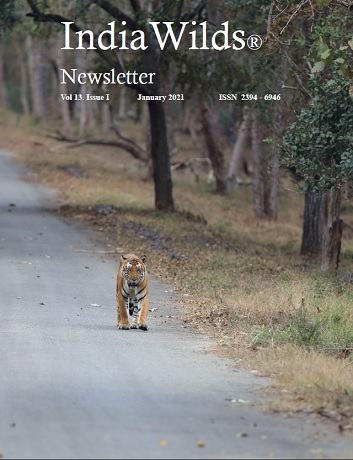
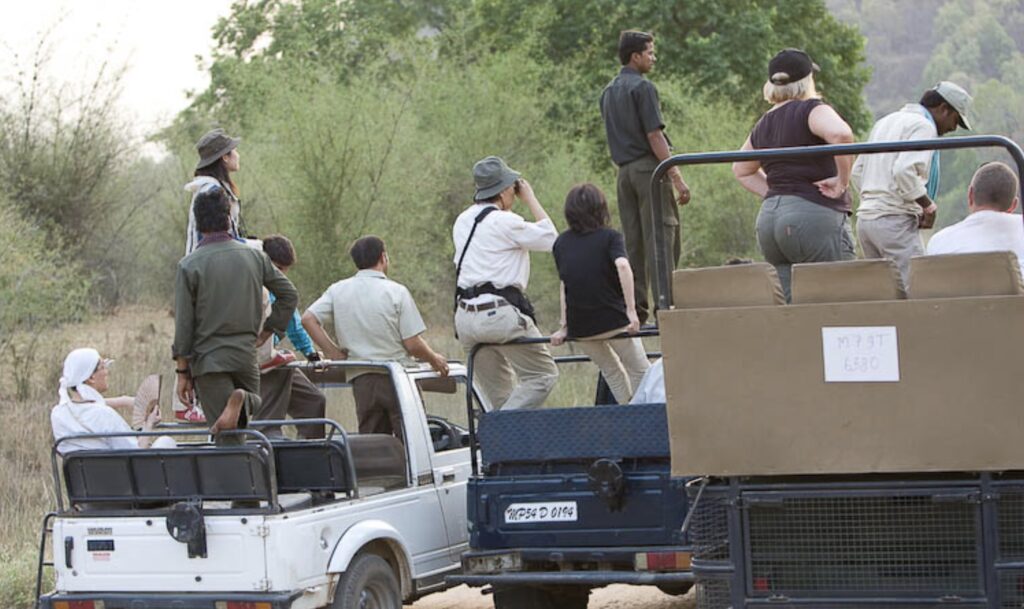
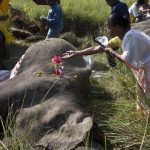
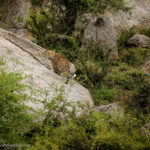



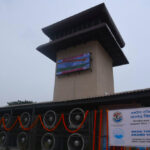

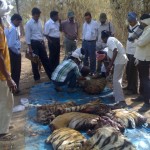



Leave a Reply